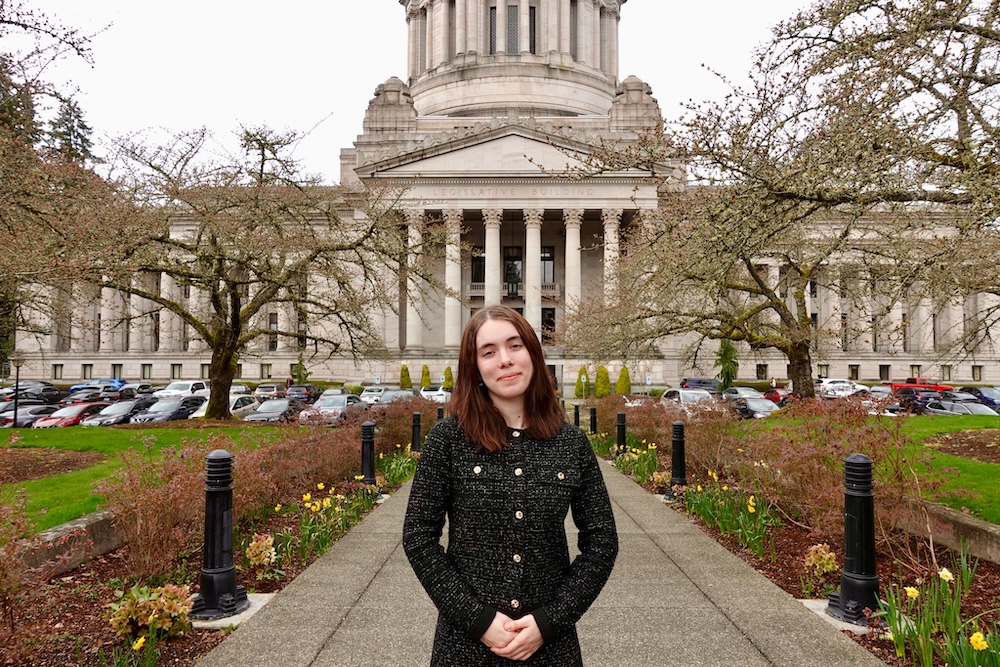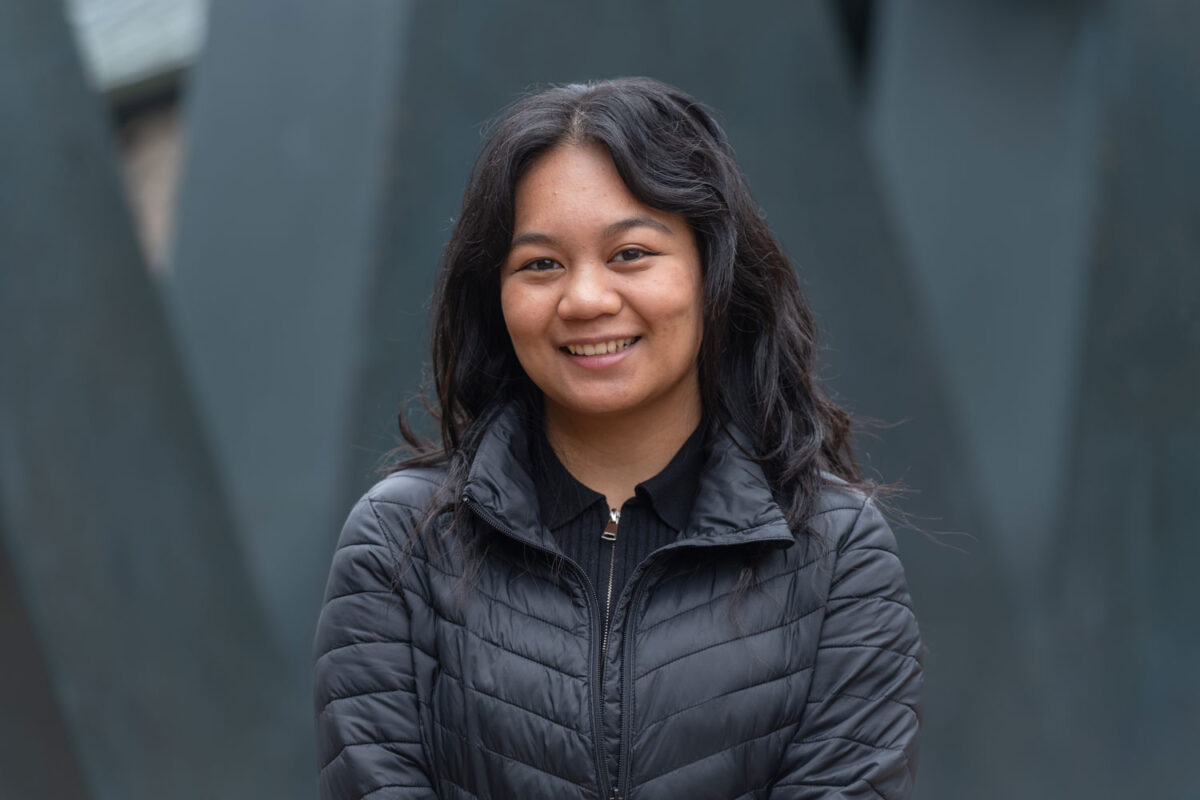
Many people undervalue math, which is perhaps why April is Mathematics Awareness Month. In fact, math is much more than x + y = z, says Dr. Rejoice Akapame, assistant professor in the University of Washington Bothell’s School of STEM and School of Educational Studies.
“This abstract way of thinking about mathematics makes people think that it doesn’t have relevance to our daily lives, but it does,” she said. “We use it to shop for the best food prices in the grocery store, measure ingredients for dinner and figure out the distance, time or cost for travel.
“On a larger scale we can all relate to right now,” Akapame said, “mathematics is a foundation for the work done by scientists and epidemiologists, which in turn has been the basis for decisions made by policymakers during the coronavirus pandemic.
“Math matters.”
Making math relevant
To help people recognize how integrated mathematics is in their daily lives, Akapame started a project titled Scratch as a Mathematical Modeling Tool with Dr. Arkady Retik, associate teaching professor in the School of STEM. The project builds on Retik’s class, K-12 Computing Education, in which UW Bothell students use Scratch — the world’s largest and free coding community for children — to teach local youth the basics of coding.

After hearing about her collegue’s class, Akapame saw an opportunity to instill the value of mathematics in youth by integrating it with computer programming. “The software is a great tool for creating graphs, charts and tables,” Akapame said. “Instead of creating games, I thought it would be great to teach children how to use the software to solve mathematical problems that were relevant to their lives.”
Retik and Akapame used the spring 2021 class as a case study to gauge the software’s ability to merge both fields. The students in the course were instructed to come up with lesson plans and then teach local youth at the Shoreline YMCA how to code mathematical problems.
Merging math and coding
First-year student Daniel Tsang was drawn to the class because of the educator role it provided. “I started coding relatively late, just a year and a half ago,” he said. “I thought the opportunity to pass on the knowledge I have since gained to younger ones would be so fun and could potentially start them on the path earlier than I did.”

This aligned perfectly with the goals of the class as one of Retik’s primary ambitions is to get young children interested in coding and to introduce these types of classes into the K-12 curriculum. “Coding is important to learn because it teaches you important skills such as critical thinking, problem solving and creativity,” Retik said. “It’s also a skill that is valued in the workforce — and introducing youth to it is highly important as research shows that career choices are made as early as middle school.”
The challenge, however, is that the K-12 curriculum is already packed with subjects, and there is a severe shortage of computer science teachers. “Most who get the degree want to go straight into the industry and not into education,” Akapame said. “So there are very limited resources.”
Using Scratch to combine coding with math can help solve this issue. “Math teachers can add this software into their classrooms without needing to develop an entirely new course,” Akapame explained. “Plus, if math teachers took this on that would alleviate the need to hire computer science faculty. It’s a great model to scale up existing resources.”
Career win-win
Wanting both programming and mathematics to appeal to the youth at the YMCA, the students in the class engineered math problems that were relevant to the children’s day-to-day lives — such as finding the fastest route from their home to their favorite restaurant.

“The kids loved it. They were so excited to solve these cool problems that they forgot they were doing math,” Retik said. “And they were proud of themselves, too. They couldn’t wait to show their parents what they learned at the end of the day.”
In fact, one of the parents even reached out to Retik and Akapame, saying that because of them, her two daughters are now interested in coding. “It was great to hear,” Retik said. “We need more females in the industry, and getting them interested at this age is a huge win.”

The class also turned out to be a huge win for Rosie Shen, junior in the School of STEM. Prior to the class, she had volunteered at the nonprofit Mission Inspired where she taught the programming language Python to kids. “I really wanted to grow my teaching skillset, and this class was a great opportunity to work on that,” she said. “I gained a lot of experience in the class and because of it actually landed a job as a tutor with iD Tech, a summer computer camp that specializes in providing computer technology education to children.”
Mathematics movement
Seeing the success that the project has brought to both the UW Bothell students and local youth, Retik and Akapame hope to advance the project to reach more people.
“It would be great if more elementary schools started using Scratch in their math classes,” Retik said. “And if the undergraduates could start doing this work outside of the University by starting clubs in their own neighborhoods, we could reach even more youth.”
Shen echoed the importance of starting coding early on. “Computer science and programming in general are so widespread nowadays and found in pretty much every industry,” she said. “I think it’s important for kids to have programming as a skillset that they can further build on, and that’s something I hope to see more of in the future.”
And while it would be great to get hundreds of students engaged in math and programming, Akapame said that even if they got only one student interested — that would be a win. “Using computers to program mathematical modeling problems opens up the possibilities of what math can do and the types of problems that can be solved,” she said. “If even one student realizes that, then that alone is an achievement.
“Overall, I hope that the students learn to appreciate the beauty of mathematics.”



